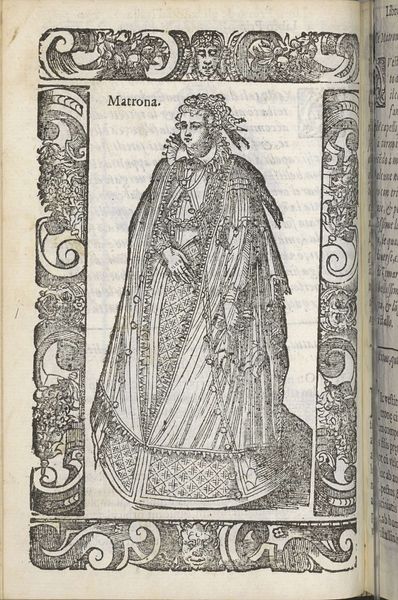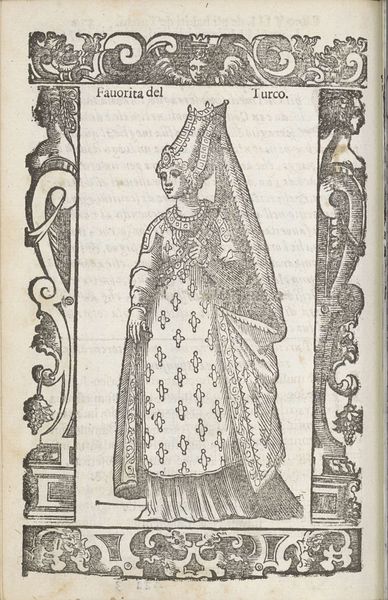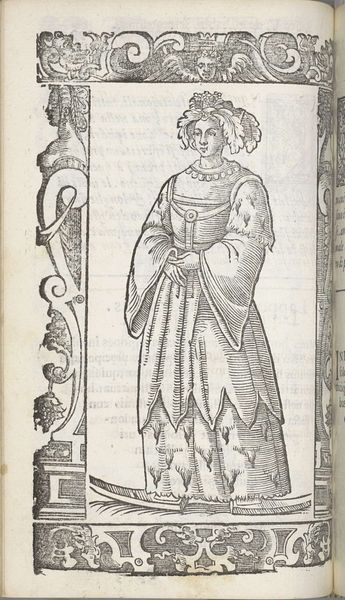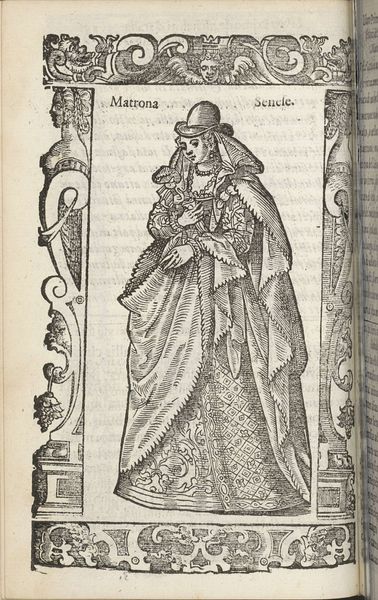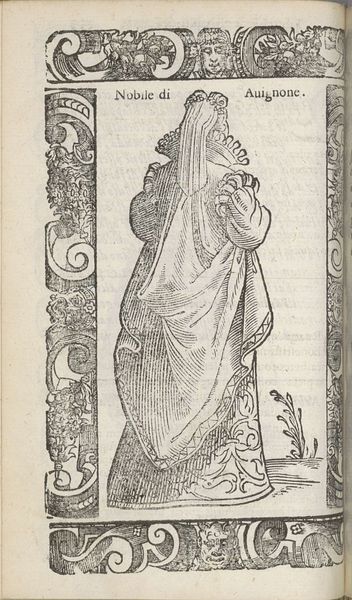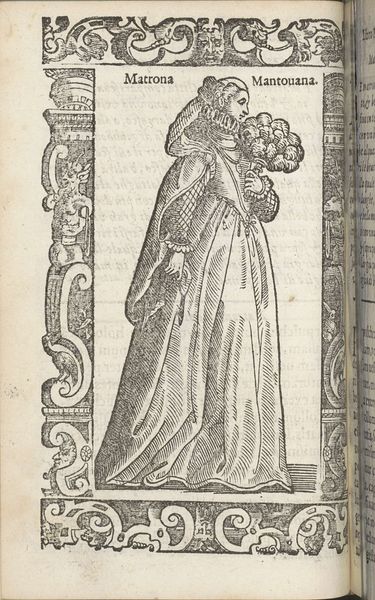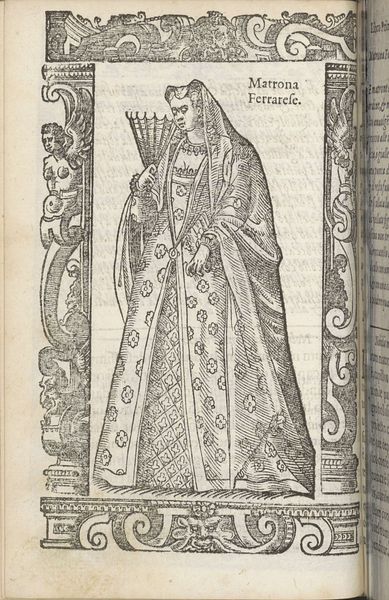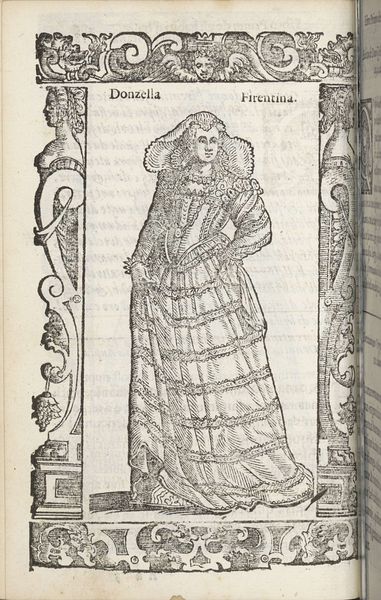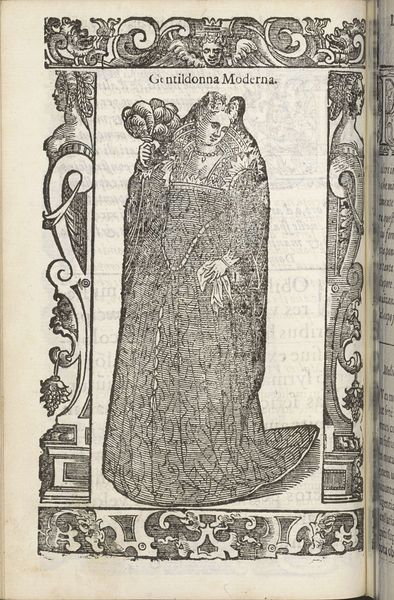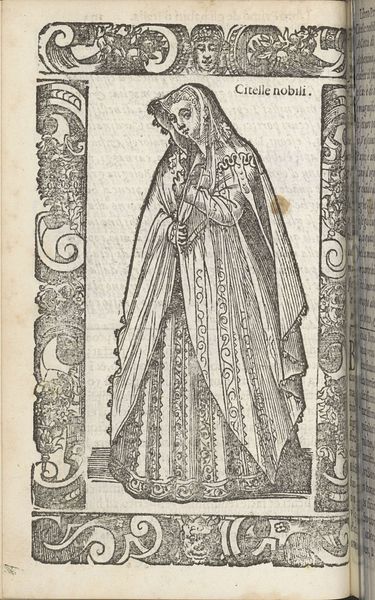
print, engraving
#
portrait
#
pen drawing
# print
#
old engraving style
#
figuration
#
pen-ink sketch
#
history-painting
#
italian-renaissance
#
engraving
Dimensions: height 167 mm, width 125 mm
Copyright: Rijks Museum: Open Domain
Editor: Here we have Christoph Krieger's "Di venetia & altre citta" from 1598, an engraving of a Venetian woman. What strikes me most is how rigidly the figure is presented. It feels almost like a political statement. What do you see in this piece? Curator: It's interesting you pick up on that rigidity. This engraving, and others like it from the Renaissance, served a specific purpose: documenting social status and civic identity through fashion. Notice how the woman's distinctive headdress, the balzo, immediately signifies her Venetian origin and class. Consider, then, how such prints functioned within the visual culture of the time to both reflect and enforce hierarchies. Does the fact that these images are reproducible and disseminated as prints shift how you view them? Editor: It does, actually. I guess I hadn’t considered that. So this wasn’t necessarily about the individual woman, but more about Venice and its identity as a whole. It’s like propaganda, almost. Curator: Exactly. And think about what aspects of identity are prioritized. The emphasis on her headdress and clothing, for example, speaks to a culture obsessed with outward appearances as markers of belonging and power. Do you see how these images are related to contemporary conversations on representation, particularly surrounding cultural appropriation or the use of fashion as resistance? Editor: I do. It's strange to think about something from so long ago resonating so clearly with current issues, but it absolutely does. It’s fascinating to view art as historical evidence, not just aesthetics. Curator: It is, and these prints remind us that art is rarely detached from the social and political contexts in which it's made. Considering them can allow us a new vision of how identity and power operated, and continue to operate, within society. Editor: This really changed the way I look at the piece. Curator: Me too.
Comments
No comments
Be the first to comment and join the conversation on the ultimate creative platform.
